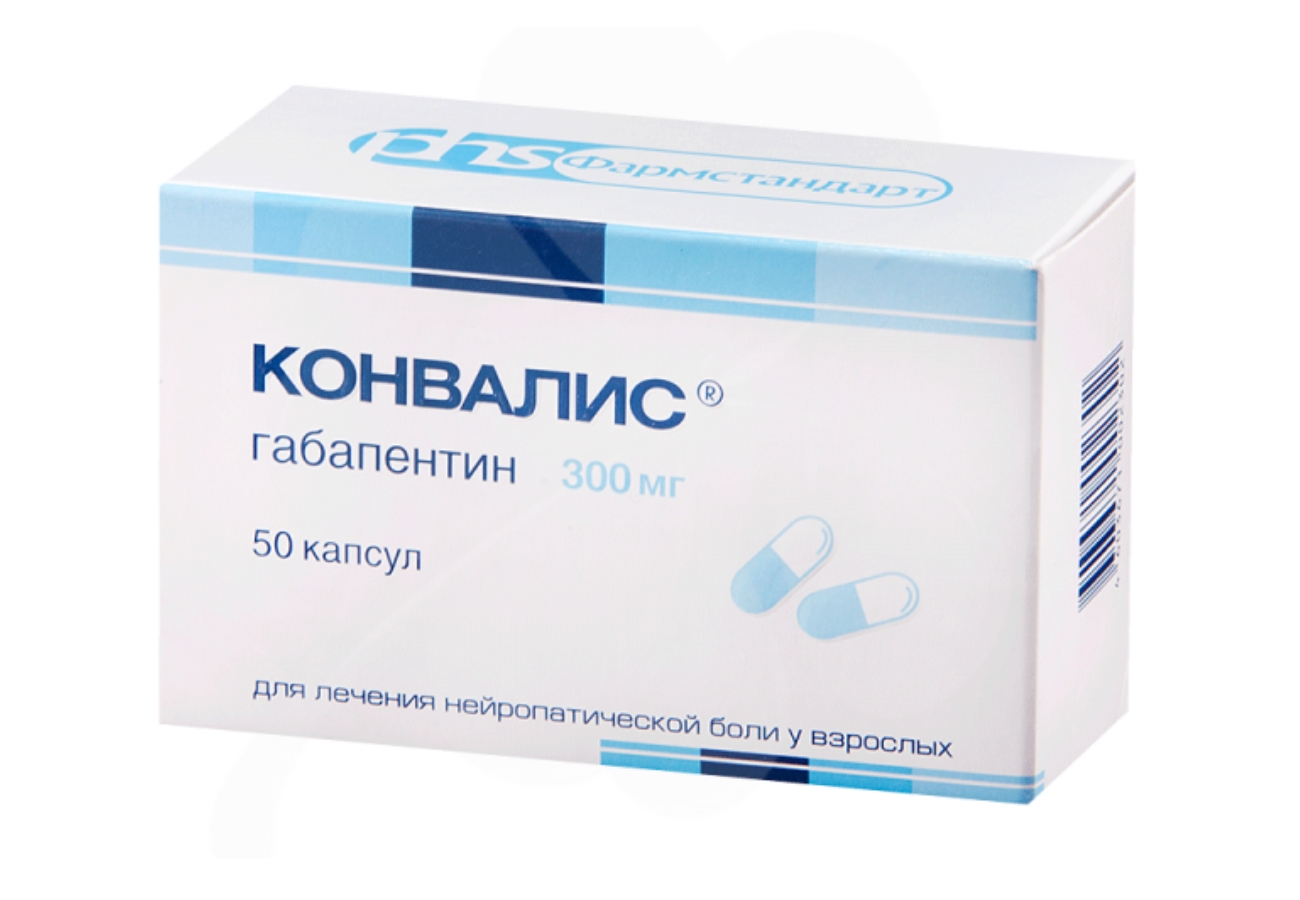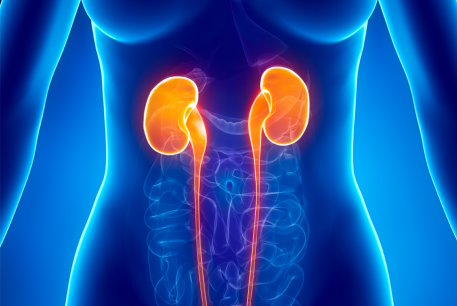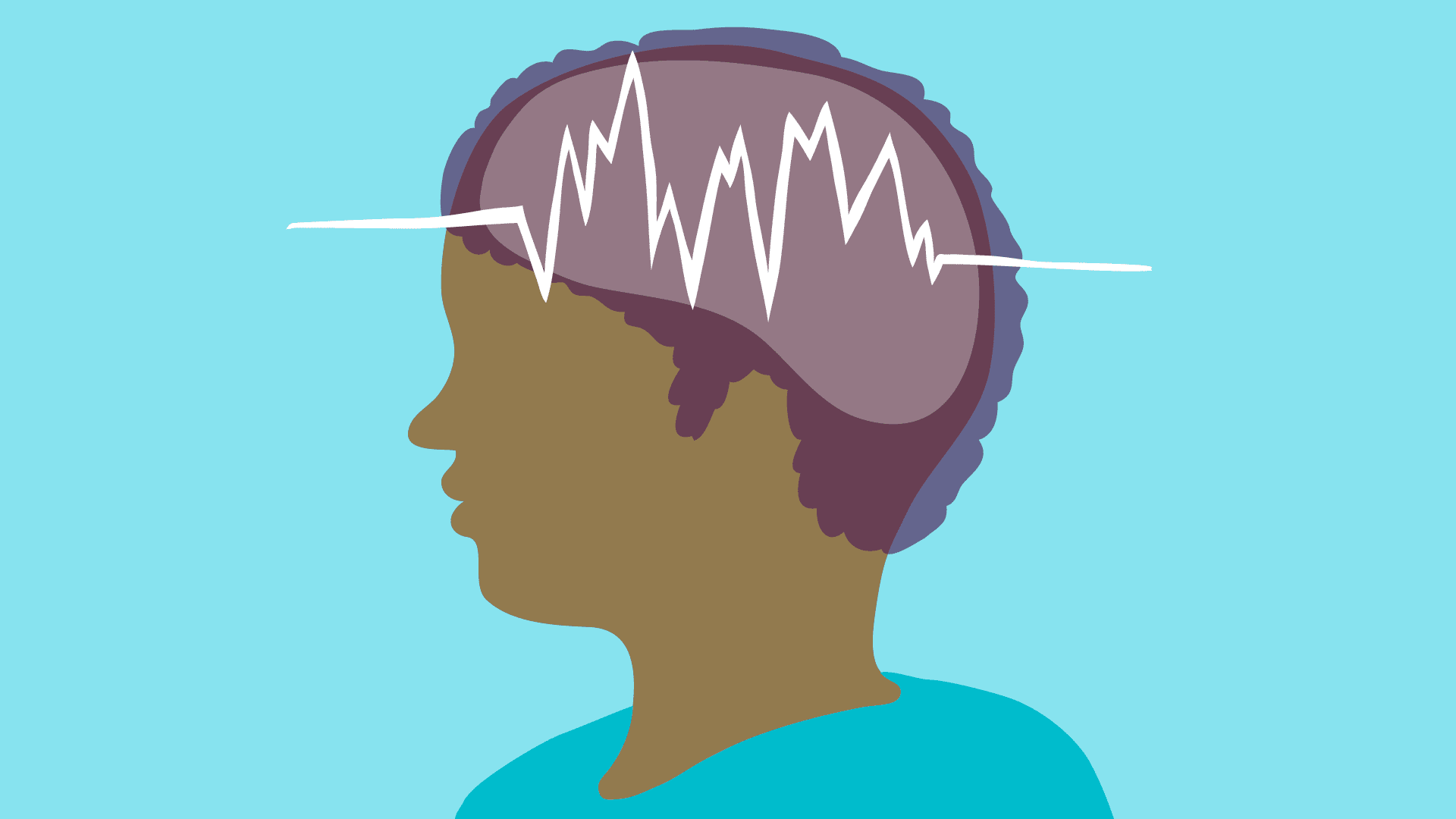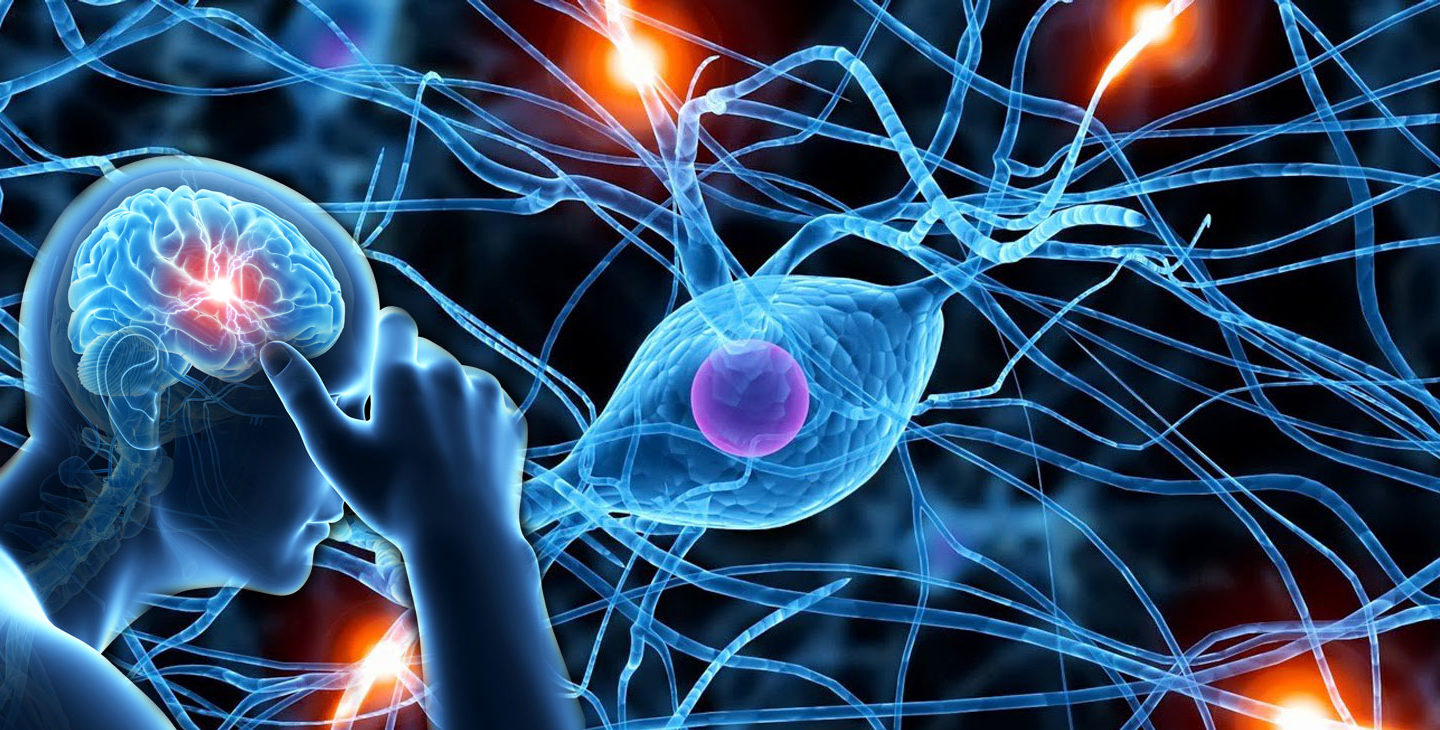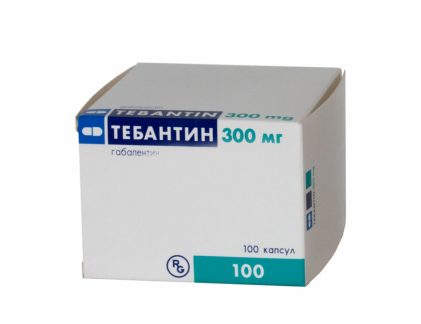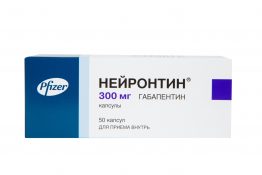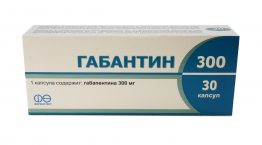Konvalis is a potent gabapentin-based anticonvulsant pharmacological agent used to relieve local muscle cramps in patients from 12 years of age. It is also used as an active pain medication to relieve pain of a neurological nature.
Material Content:
- 1 The composition of the drug
- 2 Pharmacological action, pharmacodynamics and pharmacokinetics
- 3 What helps Convalis
- 4 Instructions for use of the drug
- 5 During pregnancy and lactation
- 6 Interaction with other medicines
- 7 Convalis compatibility with alcohol
- 8 Contraindications, side effects and overdose
- 9 Analogs
The composition of the drug
Konvalis is produced in the form of solid yellow capsules, in which there is a powdery substance of a yellowish-white color. The therapeutic basis of the drug is the anticonvulsant substance gabapentin. In one capsule, its amount is 300 mg.
Among the inactive constituents are form-forming, preserving components and dyes.
Convalis tablets are delivered to the pharmacy network in plastic jars with 50 capsules or in paper packs containing 5 contour packs with 10 units each.
Pharmacological action, pharmacodynamics and pharmacokinetics
The basic pharmacological effect of the drug is to selectively suppress the functions of pathologically excitable nerve cells and reduce the frequency of their response. This is achieved due to the fact that gabapentin enhances the activity of inhibitory neurons by stimulating the activity of cellular GABA receptors and the production of GABA (Υ-aminobutyric acid), the main inhibitory mediator in the nervous system.The therapeutic component of Convalis normalizes the functions of NMDA receptors, blocks the activity of the channel of calcium ions, which is involved in the development of neurological pains.
These biochemical combinations provide a significant therapeutic effect of Convalis for various types of convulsive manifestations and neuropathic pains.
The advantage of Convalis is:
- low interaction with other drugs and anticonvulsant pharmaceuticals, which makes it possible to widely use it as an additional medication - especially in case of poor tolerance of other types of anticonvulsants;
- the possibility of prescribing for severe hepatic pathologies, since gabapentin is excreted exclusively by the kidneys.
The maximum content of a therapeutic substance in plasma is observed 2-3 hours after it enters the body. Bioavailability (the amount of the active component reaching pathological foci) is approximately 60–70%, and it decreases with increasing dose.
Food, including fat-containing products, has almost no effect on the rate of absorption and distribution of gabapentin in tissues.
The time it takes for half of the therapeutic substance received in the plasma to be removed from the body is not related to the amount of gabapentin that the patient received and is 5-7 hours.
Gabapentin does not undergo enzymatic processing in the liver and is excreted only by the kidneys.
In elderly patients, patients with renal pathologies or undergoing hemodialysis, gabapentin is retained in the tissues and is removed much more slowly, as a result of which dose reduction is required.
What helps Convalis
Konvalis is used in epilepsy in patients over 12 years of age as the only or auxiliary medication with the goal of:
- relief of partial (local, focal) seizures, when uncontrolled electrical activity occurs in a certain area (focus) of the cerebral cortex;
- stopping the development of focal seizures that turn into generalized (large) seizures (secondary generalization), when pathological electrical activity spreads to both hemispheres of the brain.
The medication is also used to eliminate or reduce the strength of pain of a neuropathic nature in patients from 18 years of age with the following pathologies:
- postherpetic neuralgia (pain against the background of herpes zoster);
- pain syndromes with various forms of mono- and polyradiculoneuropathy, including nerve damage, paralysis, vascular disorders in diabetes and alcohol dependence;
- pain in the defeat of the trigeminal nerve;
- pain after cerebral hemorrhage, against the background of multiple sclerosis, damage to the spinal cord;
- pain attacks with syringomyelia;
- acute pain with Sudeck's syndrome;
- phantom pains;
- fibromyalgia (musculoskeletal pain, pain during touch and pressure).
Currently, the medication has also begun to be used:
- with seizures developing in patients with diagnosed tetanus;
- in gynecology - to eliminate and alleviate severe manifestations with a severe menopause, especially in women who are prohibited from substitution therapy.
Convalis shows low therapeutic efficacy:
- with generalized epileptic seizures that spread throughout the body, causing loss of consciousness and massive spasm of small and large muscles;
- with abscess epilepsy - a form of an epileptic seizure with short-term loss of consciousness.
There is evidence that gabapentin in age-related dosages, as one of the medications, is used in pediatric neurology in children from 3 years old to treat a resistant (non-curable) form of epilepsy, in which the severity, frequency of seizures and neurological disorders are difficult to respond to drug therapy.But Convalis capsules contain an adult dosage, and it is impossible to separate it, therefore, anticonvulsants with lower doses of gabapentin are required to treat patients younger than 12 years of age.
Instructions for use of the drug
General rules:
- The dose and frequency of taking Konvalis are determined by the type of disease, the severity of the manifestations and the severity of renal dysfunction.
- The maximum amount of gabapentin that a patient can receive in 24 hours is 3,600 mg, which corresponds to 12 capsules.
- You can take medicine without regard to food intake.
- The capsule is not divided and washed down with the right amount of liquid.
- If you want to reduce the dose or cancel the medicine, this is done slowly, in the interval of 7-14 days. If you suddenly stop taking Convalis, there is a possibility of a convulsive seizure.
Given the property of the drug to inhibit neuromuscular activity, patients receiving Convalis should avoid activities associated with active mental and motor reactions, including driving vehicles, operating complex or hazardous equipment.
Partial cramps
The treatment course begins with a single dose of 1 capsule (300 mg). On the second day, take 1 capsule twice (total 600 mg). On day 3, a three-time intake of 1 capsule (900 mg) is provided.
If the doctor considers it necessary, the dosage can be increased, but the daily amount of gabapentin is limited to 3.5 g.
Typically, the dose of anticolvunsant with varying severity of seizures varies from 900 to 1200 mg per day. The daily amount of Konvalis is divided into 3 doses, taking capsules after 8 hours.
To prevent the resumption of a convulsive attack, the interval between doses of the drug should not be more than 12 hours (with a three-time intake).
Neuropathic pain
Therapy for pain of a neurogenic nature also involves a gradual increase in dose. The course begins with a single dose of 1 capsule on the 1st day of treatment, on day 2 take 1 capsule twice. And on the 3rd day, they increase the frequency of admission up to 3 times.
With severe pain, it is allowed to immediately switch to a three-time regimen of 300 mg.
If the therapeutic effect is not sufficiently pronounced, the dose is allowed to be increased to 1200-2400 mg, given that the maximum number of capsules that can be taken per day is no more than 12 pieces. In patients with postherpetic pain who received 6–12 capsules per day, a significant decrease in pain was observed within 5–7 days.
Since gabapentin undergoes filtration in the kidneys, when the filtering function worsens against renal pathologies, the drug is prescribed in reduced doses.
The established daily dosages for renal dysfunction:
- if creatinine clearance (CC) is in the range of 50–79 ml / min, the patient can take 2 to 4 capsules per day;
- with CC 30–49 ml / min, the amount of the drug is limited to 1-2 capsules per day;
- if the QC value is 16-30 ml / min, it is allowed to take 1 capsule per day;
- with CC less than 15 ml / min, it is allowed to take the medicine every other day in the amount of 1 capsule in 24 hours.
When undergoing hemodialysis, you can first take 300 mg. After each procedure lasting 4 hours, the patient can receive an additional capsule of Convalis. On days when the procedure is not carried out, the medication is not taken.
During pregnancy and lactation
Multilateral and in-depth studies on the effect of the drug on pregnancy and the development of the fetus have not been conducted.
Studies on mammals have allowed Convalis to be classified as a Category C FDA drug. This means that the medication can cause malformations and disrupt the course of pregnancy and childbirth. Therefore, the drug is not used for the treatment of patients awaiting delivery.
The medication is prescribed for pregnant patients in exceptional cases - for example, against the background of preeclampsia, which threatens the life of the expectant mother.
Gabapentin passes into breast milk, but its effect on the baby's body has not been determined. Therefore, during the treatment with Konvalis, the child is transferred to artificial feeding.
Interaction with other medicines
With the combined treatment of Convalis and morphine, drunk 2 hours before the first medication, an increase in the analgesic effect and the body's resistance to pain irritants was noted. It was also found that gabapentin significantly (up to 50%) reduces morphine intake in the recovery period after surgery. In addition, with the combination of these pharmaceuticals, it may be necessary to increase the dose of Convalis. It is necessary to monitor the onset of symptoms of brain damage (primarily, manifested by pronounced drowsiness) in order to immediately adjust the dose of drugs in the direction of reduction.
With the concomitant use of Convalis and other anticonvulsants (Phenobarbital, valproic acid, Carbamazepine), as well as contraceptive medications with norethisterone and ethinyl estradiol, no noticeable biochemical interaction leading to any clinical effects was found.
Antacids (antacids) based on aluminum and magnesium (Maalox, Almagel) reduce the volume of a therapeutic substance reaching the focus of exposure by approximately 20%. Therefore, the interval between their intake should be 2–2.5 hours.
Pimetidine slightly slows the excretion of a therapeutic substance by the kidneys.
With a parallel intake of Convalis and Hydrocodone, the peak concentration of the latter in the blood decreases, its excretion is accelerated and the therapeutic effect is reduced. And there is also a slowdown in the removal of gabapentin from the body, an increase in its content in the blood and increased adverse reactions.
Ethanol and drugs that inhibit brain activity increase undesirable neurological reactions from Konvalis.
Convalis compatibility with alcohol
Recently, drugs with gabapentin have been used in narcology in the treatment of alcohol and drug addiction - to alleviate the condition with a long-term refusal from ethanol and opiates. However, the concomitant use of Convalis and alcohol is prohibited, as they reinforce each other's adverse reactions, which leads the patient to serious conditions: complete disorientation, dangerous aggressiveness, life-threatening pressure drop and coma.
Treatment with this anticonvulsant drug is possible only against the background of the patient's complete refusal of alcohol, in hospitals with constant medical supervision and using accurately calculated dosages, which the specialist can adjust at any time.
Contraindications, side effects and overdose
The main conditions in which Convalis is contraindicated:
- special sensitivity or intolerance of both the active substance and any inactive components of the medication;
- age up to 12 years with epilepsy and up to 16 years with neurological pain;
- lactose intolerance, absorption and processing disorders of glucose and galactose, lactase deficiency.
Most often among the adverse events are noted:
- dizziness, lethargy, drowsiness;
- nausea, dry mucous membranes, loose stools, constipation;
- runny nose, irritation and redness of the throat, cough;
- skin rash, conjunctivitis;
- fatigue, weakness, swelling of the face, hands, feet;
- fever, pressure rise, headache;
- motion blur, fussiness and at the same time lethargy, nervousness;
- tremor, pain in the back and joints;
- subcutaneous hemorrhages - bruises, bruises.
Among the rare and very rare adverse reactions can be observed:
- tic; twitching of the eye;
- lowering blood pressure, heart rhythm disturbance, tachycardia;
- inflammation of the tongue, bleeding gums, stomatitis;
- increased blood sugar, weight gain;
- fecal incontinence, enlarged liver, gastroenteritis, proctitis;
- visual and auditory disorders;
- hyper- and hypothyroidism, impotence, decreased estrogen levels, monthly cycle disorder, lack of menstruation, ovarian dysfunction;
- epididymitis, orchitis;
- unusual dreams;
- hallucinations, paranoia, suicidal tendency;
- hair loss, eczema, increased hair growth on the body in women;
- urinary retention.
With long-term treatment with Convalis using high doses or exceeding the highest amount of gabapentin per day (12 capsules), the risk of overdose is high. This is manifested by an increase or the appearance of undesirable effects of the medication, especially drowsiness, double vision, dizziness, depression of consciousness, lethargic sleep.
In this case, Konvalis is immediately canceled, an increased dose of adsorbent (preferably Polysorb) is taken, and the stomach is washed. In severe cases, an emergency call is required for emergency hospitalization of the patient. Excess gabapentin in severe cases is excreted by hemodialysis.
Analogs
Convalis analogs in structure containing the same therapeutic substance: Gabagamma, Neurotin, Tebantin, Gabantin, Catena, Egipentin, Eplirintin.
Clinical studies and medical practice confirm the high therapeutic properties of the anticonvulsant in many pathological conditions. Moreover, the list of indications for which Konvalis is prescribed is expanding. If contraindications are not violated and the exact recommended doses are observed (both single and daily), the pharmacological product rarely leads to the development of undesirable reactions, which quickly weaken with a decrease in dosage.


